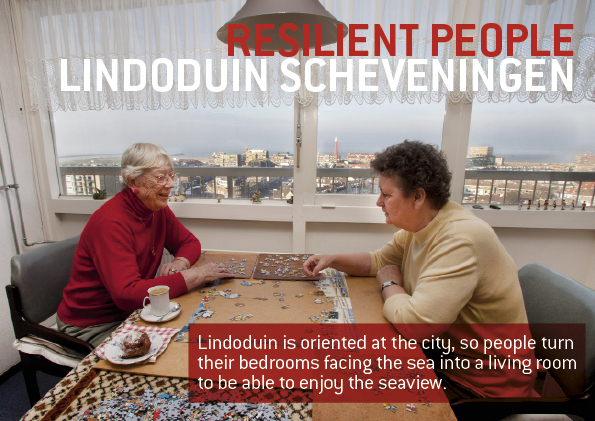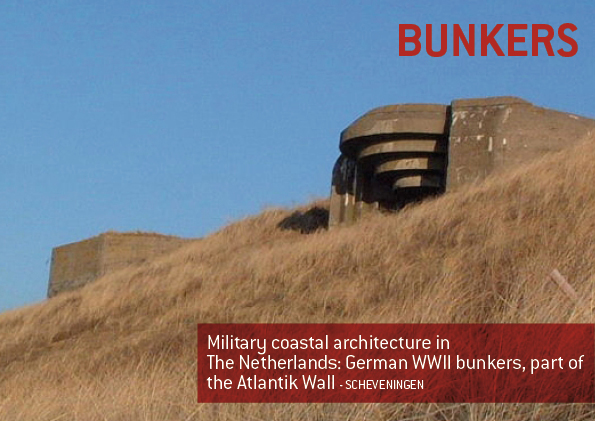To Whom Belongs The Sea? @ Failed Architecture for TodaysArt2014
| 2014-10-10 09:46:29
TO WHOM BELONGS THE SEA? @ FAILED ARCHITECTURE
Date: September 24
Time: 16:30 - 18:30
Location: TodaysArt Festival at Zuiderstrandtheater, The Hague
Satellietgroep hosted Failed Architecture at Badgast. Curator Jacqueline Heerema joined Failed Architecture at TodaysArt Summit - Bright Collisions Program. During this edition of TodaysArt, Failed Architecture explores the defamed architecture and tourist infrastructure of Scheveningen and other Western European seaside towns, taking into account international and historical perspectives. Their aim is to open up new perspectives on the alleged failure of post-war seaside architecture - from what it's perceived to be, what's actually happening and how it's represented to the public.
More information: www.failedarchitecture.com/fa-at-todays-art-scheveningens-seaside-architecture/
To Whom Belongs The Sea? by Jacqueline Heerema
Soon the problems of beach resorts will be solved by climate change. With the prospect of a more wet and stormy climate tourism at the Dutch shores will become unattractive.
Time for change!
Artistic fieldwork
How incomprehensible is it to live in a country below sealeavel? 
Understanding the Netherlands is basically understanding our relationship with water and the sea. Satellietgroep is based in The Hague since 2006 and explores through arts the social and ecological impact of the sea and coastal transitions on cities, people, communities and environments in The Netherlands and abroad. Satellietgroep invites artists, philosophers, designers, architect and urbanists to explore the sea and coastal transitions.
Oceans, seas and coastal regions are under tremendous pressure, worldwide.
What trigered the artists initiative Satellietgroep was the lack of involvement of arts and culture in the master plans for coastal transitions in The Netherlands, specially in The Hague, with top down masterplans for Scheveningen, Kijkduin, and the prospect of islands in front of the coast.

Spatial Planning North Sea 2050
With the prospect of climate change, rising sea level, shrinking land, dis-balance of salt and sweet water, rivers too full or empty, we face major coastal transitions. Transitions in spatial and economical sense that may lead to conflicts, estrangements, loss of heritage and loss of more informal cultural uses of public coastal space.

There is never one story to tell
We all live in the bubble of a Truman Show.

One day you wake up and realize what kind of world you live in.
Recently the dikes at Scheveningen turned into the dunes landscape it once was. So, lets talk about myths, appropriating the sea, manipulations, invented traditions and staged authenticity!

Theme park The Netherlands
Living in the Netherlands means living mostly in an artificial man-made environment. The Dutch are masters in disguising the cultural landscape as a natural one. 
We tend to design, construct, reconstruct and deconstruct the coastal landscape to fit it to our needs. Like living in a theme park, pleasing to the eye without worries and full of leisure and endless entertainment.
In this picture the grandmother celebrates the first time she is playing with her grandson on the beach at Scheveningen. This picture tells a story about the Netherlands: the sand they play with is put there for coastal protection, the boulevard is a dike in boulevard for coastal protection, in the background the pier is a derelict remnant of former touristic venues competing with touristic destinations elsewhere and in the middle the Dutch flag completes the picture.

So, what happens elsewhere?
Belgium: parallel to the coastline
Every Belgian is said to be born with a brick in his stomach. Building your own house has shaped also the Belgian coastline. Developed as a sequenze of rectangular blocks of private housing along promenades it transformed with mass tourism into high rise apartment building catering for the Belgium dream to spend retirement at the seaside.
The good thing is, that a lot of people live at the coast and enjoy a private seaview, can travel along the coast by parallel tramway and eat (Dutch) mussles. The offsite is, that the Belgian coast is often called Atlantik Wall and dunes became scarce.

La Grande Motte: the paradox of mass tourism in a Tabula Rasa
After WOII the French goverment invented 'Droit a la Mer' - the social ideal based on the idea that a holiday on the seaside had to be democratized. More wealth, leisure and mobility for all made spending leisure time at the seaside accessible for everybody.
In a swamp area in the south of France a new and complete beach resort was designed by Jean Balladur with special architecture for mass tourism, influence by Oscar Niemeyer.
 It was at first regarded as an ideal research area for new residential ideals, manufactured nature and innovative solutions for coastal expansion. At the same time the paradox of mass tourism arose: in search of paradise you find a composed touristic scenery.

Orange County in Kemer, Turkey - copy paste architecture
Is search of the perfect touristic destination for the Dutch, including good weather and at the same time offering the familiar comfortable Amsterdam scenery, the all inclusive Turkish beach resort Orange County at Kemer was developed.
The advertisement reads: 'When you arrive at the hotel you will find yourself at the central station of Amsterdam, including Dutch information boards. Also striking are the Amsterdam canal houses complete with slanted walls. Also the well known windmill is not lacking. In short; a unique hotel with a Dutch twist under the Turkish sun.'

Lindoduin
In Scheveningen however, the high rise appartment building Lindoduin was built with a city view. Resilient people turned their bedrooms into the living room facing the sea.


So, who decides what?
Zandmotor - Building with Nature
Understanding coastal architecture in The Netherlands implies understanding some of the Dutch history and the resilience of the Dutch landscape and people.
It is a layered landscape, showcasing the anthropogenic impact through ages: from building dikes and polders starting in the middle ages to fortresses, bunkers, harbours and (only) for the last 150 years beach resorts. It is a layered landscape to be viewed as a whole in stead of cutting it up in superimposed differences. The Dutch coastal landscape is not a Tabula Rasa!
Though we percieve and manipulate the coastal landscape as a natural landscapes of beaches and dunes it is in fact a cultural man made landscape. Coastal architecture reflects our relationship with water and the sea!

Delta Works
It is a resilient landscape, built to protect against the sea, built on fear of drowning and monsters. Hunter/gatherers migrated back and forth from the higher inland hills across the swamps to the dunes. Only poor people - like fisherman - lived precarious lifes in the dunes. Villages were swallowed by the sea mutiple times. Living in The Netherlands is a story about the liminality of coexistence between man and water. Safety is a big issue! In the latest Prinsjesdag budget 20 billion euro is designated for enforsing the dikes.

Bunkers
It is a hostile landscape, built to attack and defend, built to gain. Trade and war dominated the shores. Man is an explorer and invented cartography to chart the world and model reality and it’s myths. With the explorations of the sea for discovery of new countries and colonies, trading for goods, trafiking of people and cultures traders became rich and started hunting in the dunes, building boats and harbours. Wars left relicts and scars in the coastal landscape.

Tourism
Starting around 1800 the perception of the coast shifted to a landscape for wellness with tourists in seach of paradise. The coastal landscape became an imaginairy construction with the rise of Kurhauses, boulevards and casino's for the happy rich. Sea view became valuable. Mass tourism turned the shore into a commercial landscape in which beaches are more and more converted into private enterprises.

People in Scheveningen are born with sand between their teeth
However - it is a landscape to express your identity, that you are different! Even through invented traditions and staged authenticity!
Once a fishing village swallowed by the city The Hague there is still a vibrant Scheveningen identity. Even the construction of identity is appreciated. When in the fifties an economic impuls was needed for the declining fishing industry, the municipality of The Hague invented 'Vlaggetjesdag', a special day to celebrate the new herring. In search of branding they adopted the wapon of an extinct family at Hoorn or Enkhuizen: the 3 herrings! It became broadly adopted by the Schevening people as their logo and is recently even stamped into the garbage cans at the new boulevard of Scheveningen.


Badgast
In the most multi layered spot on the shores of the Netherlands Satellietgroep built Badgast. Scheveningen has all the stories to tell, including the myth of free horizon - and the illusion of the seaside as a place of mental and physical freedom, as a place to marry and mourn.
A cultural zenith! Badgast is built by recycle architects Refunc in the middle of urban beach community F.A.S.T. at the pivot point of boulevard and harbour. Built on top of a WOII bunker. Wedged between 2 fish and chips shops. Built on a derilict plot as an 'in between' adventure, instigated by reccession and (still) waiting for the highrise hotel to be built on the spot.
I love planning and politics! They shape - again and again - worlds beyond our imagination. 
They seem to forget that Scheveningen is not shaped into 3 superimposed categories of Bath, Village or Harbour, but it is a layered coastal landscape, including residents and visitors.
Over and over residents combat superimposed changes, and alliances arise between fishermen and rich folks. It may be time to listen?


Resilience
I remember as a child that the Kurhaus was boarded up and destined to be demolished. Recently it just escaped bankrupcy again. The pier is closed for public as a result of the battle between the city municipality and Van der Valk family. The habour is turned into a Marina, where new residents in recreation houses complain about the noise and smell of the fishing boats. The Hague people do not go to Scheveningen and resist tourism spreading across the harbour. The Norfolkterrain itself was designated for culture, became a battle ground for competing ideas, but now, after the failure of the Spuiforum, now finally the terrain opens up for culture!

Appropriating the Sea
There is never one story to tell: the myths of coastal planning!
Buro Boulevard Zandvoort was a cooperative project by Jeanne van Heeswijk and Francois Lombarts. At the Burgemeester van Fenema square next to the boulevard of Zandvoort they set up a design studio. From this location they researched all the plans for the area that have been made over the years. Decades of plans that not have been realised. They also investigated the current needs and ideas of the inhabitants and visitors of Zandvoort.
The outcome of these researches where combined in order to create a big artist impression of all the drawings, plans, ideas and impressions that where made for this seaside area. With a team of street painters a huge drawing was painted on the square. It combined quotations from the many reports and municipal development plans with impressions from ideas for the area. All functions that the location could have had, but for various reasons still does not seem to have.
Thank you for your attention!
